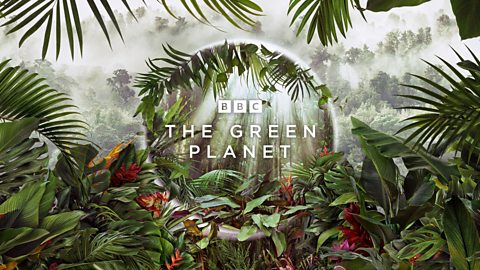┬ķČ╣į╝┼─ Teach > Teacher Support > Articles
By Claire Seeley
Primary educational consultant and science educator
This article was first published in February 2022.
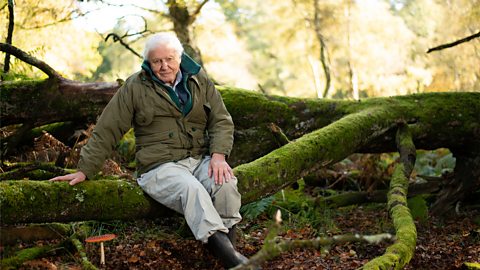
As TV audiences marvel at the close-up world of plants in ┬ķČ╣į╝┼─ OneŌĆÖs The Green Planet with Sir David Attenborough, so too are primary pupils and their teachers.
The latest landmark series from the Natural History Unit uses ground-breaking filming techniques to capture the lives of plants as weŌĆÖve never seen them before.
Many topics in the series align with the science curriculum for 7-11 year-olds, and the focus on our natural world naturally lends itself to this yearŌĆÖs British Science Week theme of Growth.
So how exactly can natural history films like The Green Planet help bring science learning to life?
Primary educational consultant and science educator Claire Seeley shares her thoughtsŌĆ”
2022 looks to be a bumper year for ┬ķČ╣į╝┼─ natural history programmes, with The Green Planet to be closely followed by Dynasties II, Frozen Planet II and Planet Earth III. As a primary science educator, I have become interested in the impact that these programmes can have on our young learners.
We know children are passionate about our environment and series like this give us an inspiring reminder of the wonders of our planet at a time when it needs our protection more than ever. It can broaden our horizons by showing us far-flung places and highlight the complex relationships between plants and animals. Natural history programmes can also show the effects of climate change around the world, making abstract concepts more real, demonstrating the impact of human activity on our planet.
Fellow teacher, Jeanette Morgan, notes that natural history programmes explore, ŌĆ£a broad range of species and environments, as well as discussing things like adaptation of plants and animals that we wouldnŌĆÖt otherwise know about. In my topic The Blue Abyss, I used The Blue Planet extensively and the children requested to continue watching it in their child-initiated learning time. One child, who had never seen any documentaries before, thought that I was showing him a fictional film ŌĆō when he realised it was real, it was one of those ŌĆśjaw on the floorŌĆÖ moments in teaching you never forget. Sir David Attenborough literally changed this childŌĆÖs perception of the world forever.ŌĆØ
The Green Planet has catapulted plants from being the backdrop, right to the heart of the action itself and I have really enjoyed the spectacle of watching plants become characters in their own right. For me these programmes provide a fascinating launch point for learning which we can really capitalise on, both within the classroom and beyond.
ŌĆ”it was one of those ŌĆśjaw on the floorŌĆÖ moments in teaching you never forget. Sir David Attenborough literally changed this childŌĆÖs perception of the world forever.
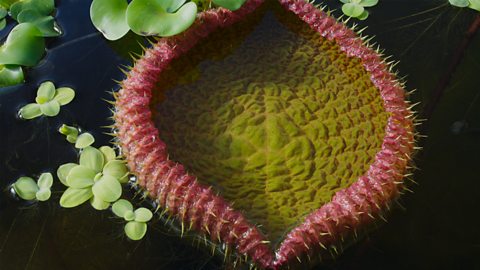
1. Zooming in on detail
One of the most intriguing aspects of The Green Planet series has been the filming techniques, which have given us a previously unseen glimpse into the world of plants.
In the episode Water Worlds time lapse photography reveals the way the giant water lily pushes new leaf buds up from the depths of the river. As a viewer, I assumed that its growth would be a passive, somewhat tranquil process, but the footage reveals the giant water lily to be almost thuggish. Covered in spines, it seems to sweep around and clear the surface of any competitors before unfurling its new leaf.
We can use the insights of The Green Planet to bring an element of surprise to our lessons. Time lapse photography allows us to observe processes that would take a much longer time frame, something we could not realistically observe in real life.
Michael Gunton, Executive Producer of The Green Planet says: ŌĆ£One of the great joys of being a filmmaker is showing people things they've never seen before, things that they could not see with their own eyes. And this does it in a way that perhaps no other series IŌĆÖve ever worked on has done, because you literally can't see these things other than on camera.ŌĆØ

2. Bringing plants to life
Teachers often voice concerns about teaching about plants. We often start by showing our learners generic diagrams of flowers which we use to show their basic anatomy. However, in the real world, plants often donŌĆÖt look like this one schematic flower, so we need to show how diverse the kingdom of plants really is. One way we can do this is to use content from natural history programmes. We know that showing is always more powerful than telling and these programmes can really bring those key moments of the plant lifecycle to life. For example:
ŌĆó Plant growth: The balsa tree grows 10 metres in one year and in the first 10 minutes of Tropical Worlds we see how, through time lapse photography.
ŌĆó Insect pollination: 18 minutes into Seasonal Worlds, we see close up how hammer orchids attract thynnid wasps.
ŌĆó Seed dispersal by wind: Sir David Attenborough illustrates this at 38 minutes into Water Worlds by examining bulrushes close up.
ŌĆó Seed dispersal by animal: A few minutes later in Water Worlds we witness piraputanga fish jumping for seeds from trees before migrating up river with them.
ŌĆó Interdependence: In Tropical Worlds we see leaf cutter ants demolishing a young bixa tree, and the tree fighting back by flooding its leaves with toxins.
ŌĆó Effect of habitat deforestation: You can illustrate the effect of habitat deforestation by showing your pupils Tropical Worlds with footage from above at around 45 minutes into the programme showing how land has changed.
The Green Planet Live Lessons from The Regenerators explore some of these basic plant concepts in more detail.
In The Green Planet Live Lesson 1, we name the parts of a plant, find out what plants need to survive and meet the leaf cutter ant and learn about their incredible relationship with the plants they eat.
The Green Planet Live Lesson 2 explores plant adaptations, seed formation and dispersal.
Bitesize: The Regenerators - The Green Planet Live Lessons. video
The Green Planet Live Lessons from The Regenerators explore basic plants concepts, using extracts from the main series. Watch the latest programme here.
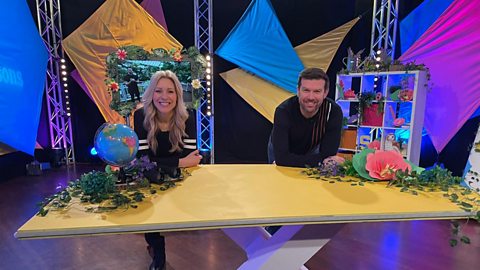
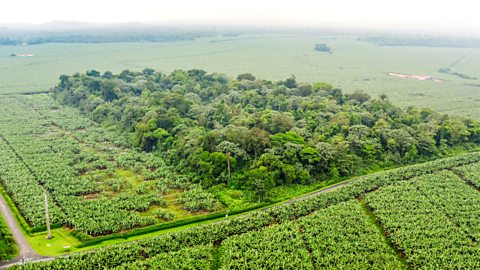
3. Understanding our relationship with plants
Sir David Attenborough has said: ŌĆ£The world depends on plants. It's a clich├® now, every breath of air we take, and every mouthful of food we eat, depends upon plants.ŌĆØ
The Green Planet series explores our relationship with the plant kingdom, how humans have harnessed the power of plants and over time have learnt to breed them for certain characteristics. This type of modern agriculture produces high yields. However, the resulting monoculture wipes out wild species and their pollinators, weakening biodiversity.
In fact, two out of five plants now face extinction. The United NationsŌĆÖ Sustainable Development Goal 15 calls for the protection of terrestrial ecosystems and halting of biodiversity loss. The race is on to identify as many plants as possible before their habitats are wiped out through intensive farming methods, deforestation or habitat loss through climate change. The plant kingdom holds many beautiful treasures which we donŌĆÖt want to lose, and it may safeguard our own futures too by providing food crops, medicines and materials.
Loss of biodiversity makes habitats more vulnerable, less resistant to disease and the ecosystem is less resilient in the face of climate change. Growing the same crop year after year reduces the availability of certain nutrients and degrades the soil, leaving the land vulnerable to erosion and less resilient to drought.
Natural history films show us how and why these issues matter and they signpost us to the work of scientists in the field, working to overcome them. For example, in the Human Worlds we see the work of the Millenium Seed Bank at Kew, which saves seeds from 40,000 species.
The Regenerators has lots of useful resources to support you to make a difference with your learners, both at home and school.

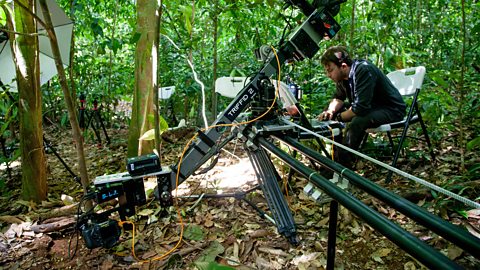
4. Learning from natural history films
There are numerous ways you can weave natural history programmes into the wider curriculum or extra-curricular activities. Here are some ideas:
ŌĆó A natural history film club ŌĆō if your school has a TV license you could show programmes such as The Blue Planet, The Green Planet, Planet Earth and Life on Earth at an after-school club. You can either show the whole programme or some show excerpts and then create small activities to build on ideas from during the session.
ŌĆó Channel your inner scriptwriter ŌĆō Sir David AttenboroughŌĆÖs narrations utilise figurative language to bring each story to life. In The Green Planet each plant is described as having a set of characteristics in order to bring the footage to life. Show your learners an excerpt from the programmes. Ask them to write their own script. How would they tell the story to the audience? Then perhaps repeat the activity for plants that occupy the spaces where you are such as your school grounds, a local park or allotment. Ask them to consider why their plant is special? How is it adapted to its surroundings? Which plants or animals does it share its space with? How does it survive in that space?
ŌĆó Green Careers ŌĆō At the end of each episode of the most recent series such as The Green Planet we are treated to a glimpse behind the scenes. Here we meet people working in the world of plants as ecologists, horticulturalists, members of a film crew, entomologists, agronomists and plant scientists. Have a look at The Regenerators Green Careers guides. Ask your learners to create their own adverts for these jobs.
ŌĆó Get Active ŌĆō The Green Planet has brought a world of plants to our TV screens. Enthused and inspired by a myriad of plants from right across the globe, itŌĆÖs important not to leave the learning there. Take your learners outside to experience the reality of being in the natural world. There, they can experience the natural rhythms of the world outside and take a moment to breathe in the world around us, in real time. Even in the most unpromising of space, however disused, unloved and dishevelled, we will find all sorts of plants. Try looking with your leaners for the plant in the darkest place, the highest place, the least likely place. Look out for the smallest plant, the plant with the biggest leaves, the plant with the longest leaf, the widest leaf, the furriest leaf, the prickliest leaf.
ŌĆó Get outside ŌĆō Look for seasonal changes by returning to the same spot each month, take photos of it, note down the conditions in that spot such as light levels, temperature and weather. Look to see how the plants in that spot have changed over time.
ŌĆó Get up close ŌĆō Zone off a small corner of school field, or even a verge in the school grounds to leave wild. Work with your site manager to ensure that these spaces are left untouched for a few weeks. Return to the spot often and watch a plantŌĆÖs life cycle play out in real time ŌĆō watch how the plant grows a flower, attracts pollinators and how it disperses its seeds.
ŌĆó Get green fingers ŌĆō Create a house plant investigation station in your classroom. Ask families for donations of houseplants ŌĆō it could be when they split and repot plants, they give you a small piece, a runner or even some cuttings. Give your learners a pet plant to look after. Growing and tending plants takes time, but their patience and perseverance will be rewarded. They may need to take their plants home for the holidays - but letŌĆÖs face it, itŌĆÖs a lot less responsibility than a hamster!
ŌĆó Get re-wilding ŌĆō To help teach the next generation about the importance of biodiversity, The Regenerators teamed up with The Green Planet to give away up to 1 million seed balls to schools across the UK. Use this simple guide to make your own The Green Planet inspired seed balls.
ŌĆó Get arty ŌĆō The more your learners look, the more they will notice. Give them time to make plant sketch books or keep a journal of their observations. Make sure that you have magnifying glasses handy. Encourage your learners to research the plants they are drawing, think about how that plant is adapted to its habitat?

The Regenerators. collection
Bitesize: The Regenerators is an ambitious new initiative that will educate and inspire children, young people and families to take simple steps to build a greener future.

Our Planet Now. collection
A focus on environmental and sustainabilty issues from across the ┬ķČ╣į╝┼─.
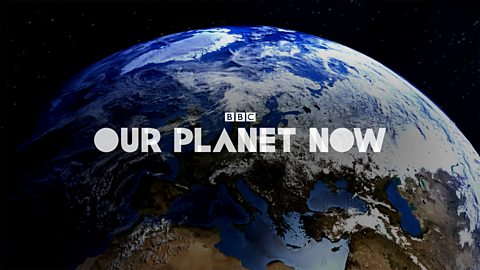
The Green Planet. collection
Dive into a world where a single life can last a thousand years, with David Attenborough. See things no eye has ever seen, and discover the dramatic, beautiful plant life of Earth.
